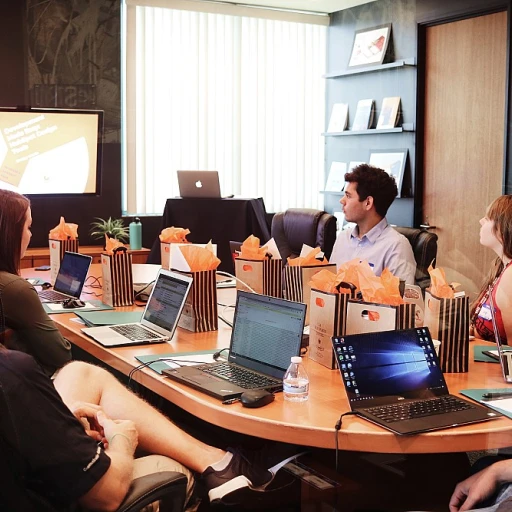
The Importance of Assessing Current Skill Levels
Evaluating Your Starting Point
Understanding your current level of expertise is a foundational step in the reskilling journey. Before diving into new learning experiences, it's crucial to assess your existing skill levels. This will help you identify what you already know and where the gaps lie. A comprehensive evaluation of your skills resume can reveal both your hard skills and soft skills, as well as the different levels of proficiency you have in various areas.
The first step involves listing all your current skills, experiences, and knowledge. This can be accomplished through a detailed skills list on your resume. Take time to identify the proficiency levels you perceive you've achieved in each skill, categorizing them into beginner, intermediate, or expert levels can provide clarity. Including problem-solving and people skills, often referred to as "soft skills,” is also essential for a holistic view.
Remember, an honest self-assessment is vital. It will not only aid in better understanding your starting point but also serve as a reference for hiring managers who might value transparency and a willingness to grow. Organizations looking to enhance their workforce will benefit from individuals who know their abilities and are keen to improve.
This structured approach ensures that the tailored reskilling program you choose will be aligned with both your current proficiency and your future aspirations. Such a refined understanding can give you a definitive advantage in the workforce, as it will allow you to effectively communicate your proficiency in job applications and interviews.
If you're looking for more guidance, considering the role of a learning and development consultant in reskilling could be incredibly beneficial. Such expertise can help you accurately evaluate your current skill level and create a personalized plan for advancement. To learn more about how a learning and development consultant can support your reskilling efforts, visit The Role of a Learning and Development Consultant in Reskilling.
Identifying Skill Gaps for Effective Reskilling
Pinpointing Specific Skill Needs for Success
Identifying the skill gaps in your current abilities is a crucial step towards effective reskilling. Understanding where these gaps lie can help tailor your learning journey, providing you with a structured path to enhance your proficiency levels and make significant strides in your career. Begin by evaluating your current skill level in various domains. Are there hard skills or soft skills that need improvement? For example, if your resume reflects strong problem-solving abilities but lacks proficiency in a specific technical tool or language, this might be an area to focus on. Time spent assessing these gaps will help in crafting a more targeted approach to your reskilling efforts. Hiring managers often look for proficiency in both hard and soft skills when evaluating potential candidates. Therefore, identifying gaps in both areas can make your skills resume more attractive. Here are some steps to guide this process:- Self-assessment: Conduct a self-evaluation of your skill levels, considering your experience and the level of mastery in each area.
- Feedback from others: Seek input from colleagues or mentors who can provide insights into your skill components and levels.
- Industry standards: Compare your skills against industry benchmarks to understand your position in the competitive job market.
Tailoring Reskilling Programs to Different Skill Levels
Crafting Successful Reskilling Strategies
Understanding the current skill levels individuals possess is crucial for tailoring effective reskilling programs. People enter the reskilling journey with diverse skill levels across both hard skills and soft skills, and this variation must be reflected in the training plans developed.
An effective strategy involves more than just identifying potential areas for growth, as discussed earlier. It’s about matching the training to the current level of the learner. For instance, someone with basic problem solving skills will require a different approach than someone who is already proficient and looking to refine their expertise to an advanced skill level. Hence, crafting reskilling programs should consider:
- Level Assessment: Begin by assessing the specific skills that participants currently possess. This will help in shaping a curriculum that incrementally builds on existing knowledge.
- Customized Modules: Create training modules that cater to different proficiency levels. Whether it is beginners or those at a more advanced stage, tailored content ensures efficient learning.
- Flexible Scheduling: Considering the time commitment involved, a flexible learning schedule that adapts to varying levels of proficiency ensures that each individual can learn at their own pace.
Organizations that successfully align their training strategies with the skill levels of their workforce create a more effective and engaging learning environment. Hard skills like coding or data analysis may require more technical tools and resources, while soft skills like communication and leadership could involve workshops and experiential learning methods. This approach to reskilling helps learners not just in understanding and mastering new skills but also in achieving significant career milestones and job satisfaction over time.
Overcoming Challenges at Different Skill Levels
Addressing Challenges Across Skill Proficiency Levels
When embarking on a reskilling journey, one of the significant hurdles organizations face is overcoming challenges associated with varying skill proficiency levels. Whether it’s a beginner or an expert, each level presents unique obstacles that need to be tackled effectively.
For beginners, the primary challenge lies in building foundational knowledge and developing both hard skills and soft skills. This requires patience and consistent practice. Introducing basic tools and problem-solving techniques can significantly aid their learning experience. Soft skills such as communication and people skills, which are crucial in any job, should also be integrated into their training program right from the start. This will help in preparing a comprehensive skills resume that resonates with hiring managers.
On the other end of the spectrum, experts often grapple with the challenge of unlearning outdated methods and adapting to new industry trends. To keep up with rapidly changing times, advanced professionals may need more sophisticated tools and writing exercises that cater to enhanced proficiency levels. Facilitating expert-level collaborative sessions and providing opportunities for innovative project work can be particularly constructive. Moreover, these experts need to be engaged in activities that will not only refine their resume skills but also broaden their list of skill competencies.
Additionally, mid-level professionals often struggle to break through plateaus where experience isn’t translating into advancement. This level requires a hybrid approach where both the reinforcement of existing skills and the introduction of new skill components are essential. Tailoring the training to focus on overcoming specific skill gaps will help organizations to better support these professionals.
Overall, maintaining a clear list of proficiency levels and addressing the specific needs at each stage will help organizations streamline their reskilling processes. By recognizing the inherent challenges in skill levels, organizations can better tailor their training, enhancing the learning journey and career advancement of their workforce.
Measuring Progress and Skill Level Advancement
Monitoring Growth and Skill Mastery
Measuring progress is a critical step in the reskilling process, as it ensures that individuals are on the right path to achieving greater proficiency levels. Both hard and soft skills need to be consistently evaluated to understand the journey from basic knowledge to expertise. This ongoing assessment will help organizations and individuals alike to identify when a skill level has been mastered or when further development is required.
To effectively track growth, consider implementing a structured evaluation system that outlines clear benchmarks for each skill level. This might include:
- Regular performance reviews where job performance is assessed in relation to the newly acquired skills and knowledge.
- Utilizing tools such as skill assessments or language proficiency tests to evaluate skills comprehensively.
- Encouraging self-assessment to foster introspection and individual responsibility for learning.
- Gathering feedback from mentors or peers to provide a well-rounded view of the skill levels attained.
These strategies will not only offer insight into individual skill components but also help in updating skills resume and list skills effectively. This information becomes invaluable when showcasing one's abilities to hiring managers or when applying for roles that require specific skills. It is also beneficial for tracking improvement over time, allowing individuals to present a dynamic skills resume that reflects their ongoing journey.
By actively measuring skill progression, individuals can focus their learning efforts and maximize their potential for career advancement. This continuous improvement strategy will help bridge the gap between current abilities and desired skill levels, ensuring that both personal and organizational goals are met efficiently.
Leveraging Skill Levels for Career Advancement
Skill Levels as a Road Map to Success
Understanding and leveraging skill levels is a vital component when aiming for career advancement. It's not just about ensuring your resume reflects an accurate list of skills, but also demonstrating an evolving proficiency over time. A well-defined skill level framework can act as a valuable guide, showing potential areas for growth and signaling readiness for new responsibilities.
When you clearly highlight your different levels of proficiency, hiring managers and organizations are better equipped to match your capabilities with suitable job roles. For instance, by delineating between hard skills like technical knowledge and soft skills such as problem solving and people skills, you can present a comprehensive view of your expertise.
A structured approach to presenting skill levels can also help you identify skills that require enhancement. It encourages a process of continuous learning and opens the door to targeted training opportunities. For example, advancing from beginner to expert in a specific language or tool not only adds value to your work but also builds your experience within your professional field.
The task at hand goes beyond decorating your skills resume with a list of accomplishments. It’s about recognizing the skill components you possess and thoughtfully elevating them to the next level. This approach will invariably reflect your commitment to personal and professional development, aligning with the strategic goals of your career path.
Overall, properly assessing and presenting your skill levels will help you not only adapt to changes within your industry but also position yourself as a valuable asset ready for future opportunities. Remember, in a competitive job market, showcasing how your skills have transformed over time is crucial for standing out and securing the roles that lead to your desired career path.













